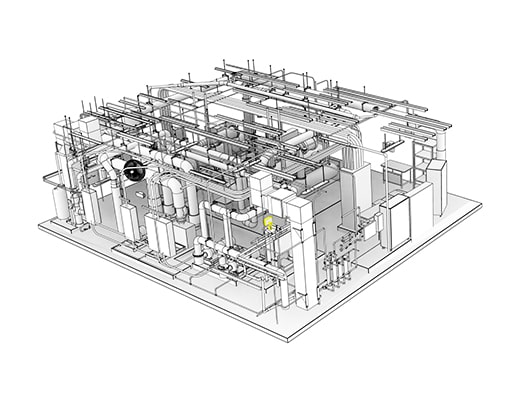


Point Cloud to BIM is revolutionizing the AEC industry by turning 3D scans into accurate models for better planning, renovation, and execution.
[California-USA, June-2025]–In today’s evolving construction landscape, the integration of advanced technology is reshaping how architecture, engineering, and construction (AEC) professionals operate. One of the most impactful advancements is the emergence of Point Cloud to BIM Services, a process that converts laser-scanned data into intelligent 3D models. This approach is not just a technical upgrade—it’s a game-changer for how construction and renovation projects are planned, managed, and executed.
Understanding the Process: From Physical to Digital
The Point Cloud to BIM process begins with 3D laser scanning or LiDAR technology, capturing precise measurements and spatial data of an existing structure. This data is collected as a point cloud, which contains millions of data points representing surfaces and geometries. Once the point cloud is generated, it is imported into BIM software like Autodesk Revit to develop a detailed and data-rich digital model.
This digital transformation of physical space enables architects, engineers, and contractors to visualize existing conditions with extreme precision—making it invaluable for both renovation and new construction projects. Whether it’s an industrial plant, commercial building, heritage structure, or a complex MEP system, Point Cloud to BIM allows stakeholders to work with real-world accuracy from the very start.
Why It Matters for the AEC Industry
In traditional construction workflows, outdated or incomplete as-built drawings can lead to costly errors, delays, and project inefficiencies. With Point Cloud to BIM, professionals gain access to highly accurate, up-to-date as-built models that support better decision-making, reduce rework, and ensure alignment between the design intent and on-site conditions.
For renovation and retrofit projects, Point Cloud to BIM offers significant advantages. It eliminates the guesswork involved in working with old structures, especially where original documentation is missing or inaccurate. The resulting BIM model serves as a reliable foundation for planning, structural analysis, clash detection, quantity estimation, and project visualization.
Key Applications Driving Adoption
The adoption of Point Cloud to BIM Services is growing rapidly across multiple sectors of the AEC industry. Its key applications include:
Benefits That Go Beyond Visualization
The value of Point Cloud to BIM extends far beyond visual modeling. At its core, it promotes efficiency, accuracy, and collaboration throughout a project’s lifecycle. Teams can coordinate seamlessly with shared BIM models, stakeholders can review design iterations in a virtual environment, and contractors can confidently execute construction tasks knowing they’re aligned with real-world site conditions.
Additionally, using scan-based BIM modeling enables improved cost forecasting, schedule management, and risk reduction. With fewer change orders, improved resource planning, and minimal site disruptions, construction teams can deliver projects faster and with greater confidence.
Technology and Tools Behind the Process
Modern BIM software platforms like Autodesk Revit, Navisworks, AutoCAD, and Recap Pro play a key role in converting point cloud data into functional models. These tools allow modelers to build accurate 3D representations by snapping model elements directly to the point cloud. Features like automated geometry recognition, layering, and clash detection further enhance the process, reducing manual input and boosting productivity.
Moreover, the use of drones and mobile scanning devices has expanded data capture capabilities, making it faster and easier to scan large or complex structures. With cloud-based collaboration platforms, stakeholders across different locations can now access and contribute to the model in real time.
Addressing the Challenges
Despite its advantages, Point Cloud to BIM does come with challenges. Working with massive point cloud files requires powerful computing resources and skilled BIM professionals. Data noise, occlusions, or misaligned scans can affect model accuracy if not handled properly. Furthermore, standardizing workflows and quality control is critical to ensure consistency across projects.
However, as technology advances and more professionals become proficient in BIM tools and laser scanning techniques, these barriers are gradually diminishing. Companies offering specialized Point Cloud to BIM Services are helping bridge the gap by providing expertise, tools, and streamlined workflows tailored to client needs.
A Future-Ready Approach for AEC
As the construction industry continues to push for smarter, more efficient methods, Point Cloud to BIM is becoming a cornerstone of digital construction strategies. It not only supports modern architectural and engineering practices but also aligns with global trends toward sustainability, automation, and data-driven planning.
The ability to move seamlessly from a physical site to a fully detailed digital model allows AEC professionals to operate with confidence, precision, and agility. With continued adoption, Point Cloud to BIM Services will play a pivotal role in shaping how buildings are documented, upgraded, and managed in the years to come.
For More Information:
Silicon Valley infomedia Pvt.,Ltd
